Day 8 - Monday 9/19/05
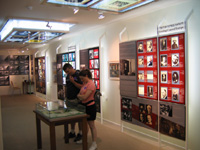
Tefen
After breakfast, we headed north for a three-day trip to the Galil region. On the way, we stopped at the Tefen Industrial Park, established by Stef Wertheimer, in order to explore the German Speaking Jewry Museum. This museum addresses the contribution and influence of Central European immigrants, who were steeped in German culture, in Israel. There are five interactive presentations on the following topics: settlement; economy, industry, and trade; architecture; medicine; law; performing arts. Here we were able to see a photo and narrative on Shula's grandfather's grandfather who was the first physician in Israel. There was also an interesting temporary exhibit on the life and work of artist Hermann Struck.
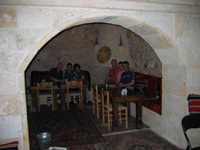
|
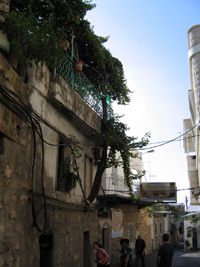
|
Peke'in
The Druze community in Israel is officially recognized as a separate religious entity with its own courts and spiritual leadership. Their culture and language are Arabic but they opted against mainstream Arab nationalism in 1948 during Israel's War of Independence, becoming active participants on Israel's side, and have since served in the Israel Defense Forces. Peki'in is one of the most ancient Druze villages in the country. It was frequently mentioned in historical sources from the thirteenth century onward, noting it's many springs, flourishing gardens and orchards, and its small Jewish community, which has been present there almost continuously since the Second Temple period (the members of the Zenati family, custodians of the synagogue, claim to have lived in Peki'in since the time of the destruction of the Second Temple). In and near the village are significant sites for Druze and Jews, including a restored Jewish synagogue dating back to the Roman Period that is said to contain stone fragments from the Second Temple within its walls. We saw beautifully built stone houses with flat roofs covered with grape arbors nestled among rocky hillsides covered with olive orchards. We dined at an amazing restaurant that was located in a house up against the walls of the synagogue where we were served typical Druze cuisine including lamb on a bed of cinnamon rice, bulgur wheat with stewed chicken, and lots of salads and dips. Our host explained that his wife was in back doing all the cooking, and kept bringing us extra food 'on the house' just for us to try as it was a specialty. Desert was also on the house - baklava, served along with strong Turkish coffee flavored with cardamom poured out of a silver and gold finjan into tiny cups.
The Kineret
Continuing north, we came upon our first view of the Kineret (named because in shape it resembles a lyre, the word for which in Hebrew is 'kinnor'), the Sea of Galilee. Also known as Lake Tiberias, it is the largest freshwater lake in Israel and at 213 meters below sea level, it is the lowest freshwater lake on Earth and the second-lowest point in the world after the Dead Sea.
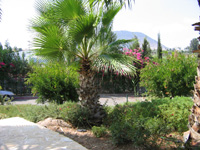
|
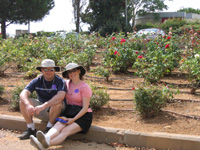
|
One thing that continuously struck us as we drove about the country was the similarity between the plant life we were used to from Southern California and the foliage we saw around us on our trip. Everywhere we went, we saw stands of eucalyptus trees and jacarandas, as well as bougainvillea, lantana, marigolds, and a rose garden. There was even red apple ice plant that we were told is called 'grave plant' in Israel because it grows in cemeteries.
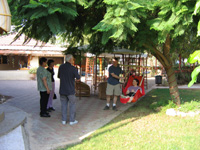
Beit Hillel and The Galil
Our accommodations for the night were in a bed and breakfast in the small town of Beit Hillel in the northern Galil. This was the location of my mother's first teaching job when she was serving in the army. She reminisced about dating my father at the time, the house that she shared with two other army teachers, and the multiple daily trips to the bomb shelter whenever the Syrians shelled the valley from the Golan Heights.
<<--- Yesterday |
Tomorrow --->> |
| Copyright © 2005 by Oreet Herbst and John Knott |